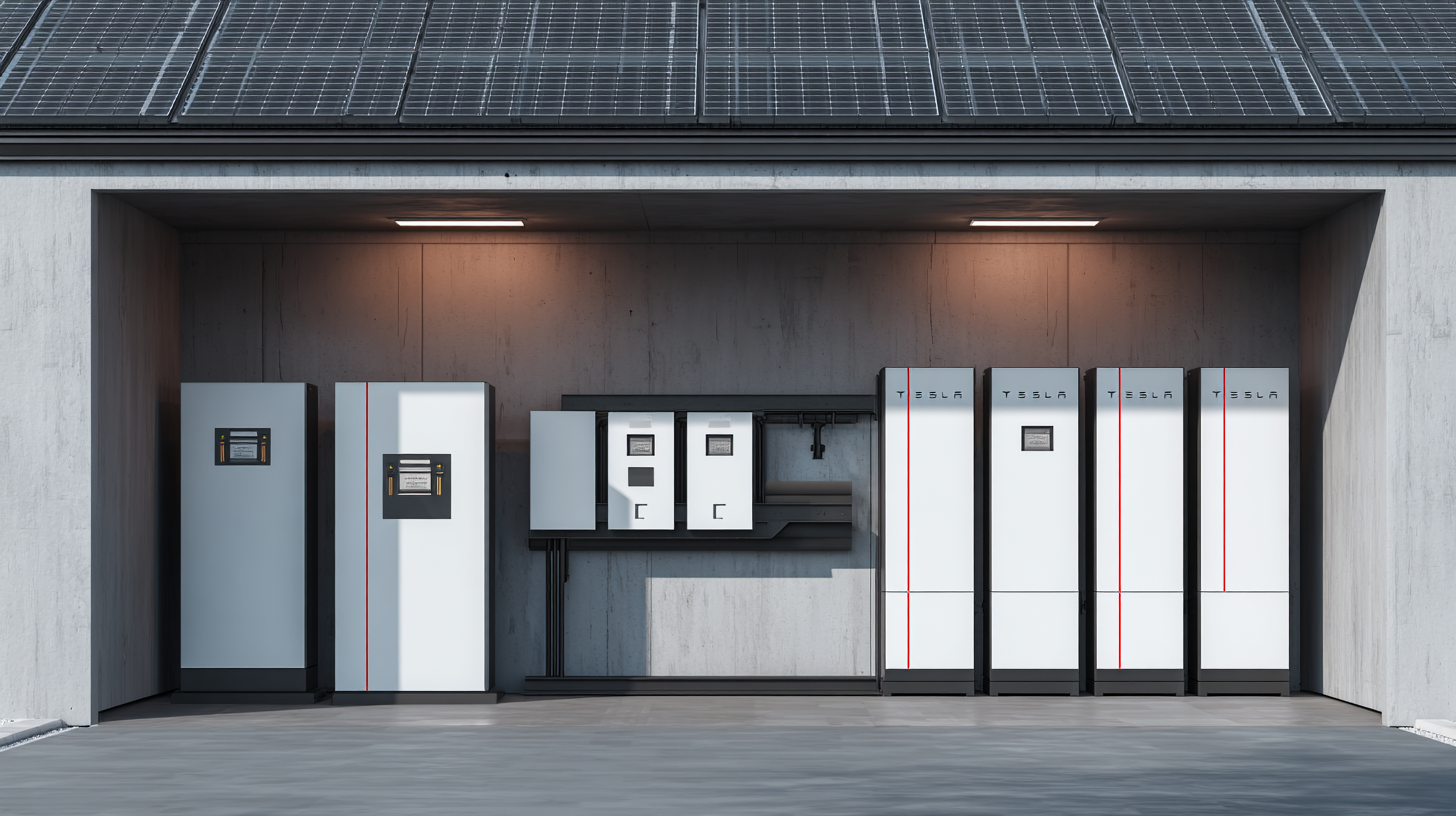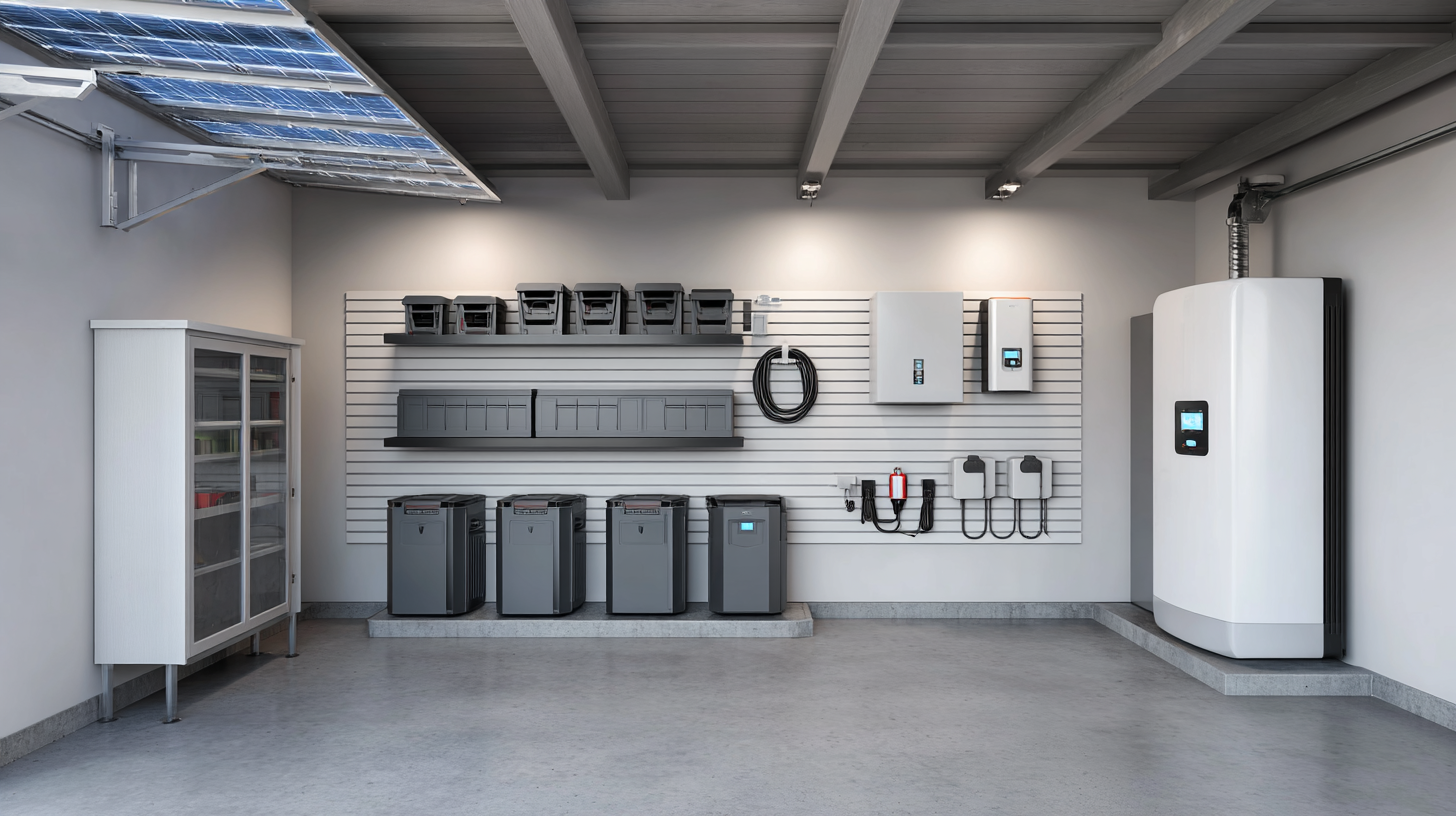As energy consumption continues to rise, efficient energy management has become paramount for homeowners seeking to reduce costs and enhance sustainability.
 House Battery Storage solutions have emerged as a pivotal technology in this landscape, allowing users to harness and store renewable energy for later use.
According to the U.S. Department of Energy, residential battery storage installations have surged by over 200% in the past three years, reflecting a growing trend towards energy independence and resilience.
By integrating House Battery Storage systems, homeowners can effectively manage their energy usage, mitigate peak demand charges, and contribute to a more stable grid.
This ultimate guide explores actionable tips and strategies to maximize efficiency with these innovative solutions, empowering homeowners to make informed decisions in their energy management journey.
House Battery Storage solutions have emerged as a pivotal technology in this landscape, allowing users to harness and store renewable energy for later use.
According to the U.S. Department of Energy, residential battery storage installations have surged by over 200% in the past three years, reflecting a growing trend towards energy independence and resilience.
By integrating House Battery Storage systems, homeowners can effectively manage their energy usage, mitigate peak demand charges, and contribute to a more stable grid.
This ultimate guide explores actionable tips and strategies to maximize efficiency with these innovative solutions, empowering homeowners to make informed decisions in their energy management journey.
House battery storage solutions are becoming increasingly vital in optimizing energy efficiency for residential properties. At the core of these systems is the ability to store excess energy generated from renewable sources, such as solar panels. According to a report by the International Energy Agency (IEA), the global market for stationary battery storage is expected to reach 2,300 GWh by 2040, reflecting an annual growth rate of over 20%. This growth underlines the importance of understanding how these technologies function and their impact on energy savings.

One of the key benefits of house battery storage is its potential to reduce electricity costs significantly. By utilizing stored energy during peak demand hours, homeowners can avoid high utility rates. The U.S. Department of Energy has reported that energy storage can lower household electricity bills by up to 30% when combined with solar power. Additionally, battery systems can enhance energy independence, providing backup power during outages and allowing homeowners to rely less on the grid. As technological advancements continue, the efficiency and affordability of these systems will only improve, making them an attractive option for homeowners looking to maximize energy efficiency.
When selecting a house battery storage solution, understanding the different types of battery systems available is crucial. Lithium-ion batteries, known for their high energy density and efficiency, are popular choices for residential use. They charge faster and have a longer lifespan compared to traditional lead-acid batteries. However, they tend to be more expensive upfront. Conversely, lead-acid batteries are more affordable initially but may not provide the same level of efficiency or longevity, making them a better fit for less demanding applications.
In addition to battery type, various features should also be considered when choosing a system. Look for batteries with advanced management systems that optimize charging and discharging cycles. Features such as scalability allow homeowners to expand their battery capacity as energy needs grow. Moreover, systems with built-in monitoring tools enable users to track performance and energy usage, enhancing their overall efficiency. By carefully assessing these factors, homeowners can maximize the benefits of battery storage, leading to significant savings on energy costs and improved energy independence.

When it comes to optimizing energy use with house battery storage solutions, understanding the charging and discharging process is key. One of the best practices for battery charging is to utilize off-peak electricity rates whenever possible. By charging your battery during these lower-cost periods, you can significantly reduce energy expenses while ensuring that your home has a reliable power source when demand peaks. Moreover, integrating smart technology can help monitor energy consumption patterns and automate charging schedules, making it even easier to maximize efficiency.
Discharging your battery effectively is just as important. Homeowners should prioritize using stored energy during peak hours when electricity rates are at their highest. This strategic discharge not only decreases reliance on the grid but also leads to substantial savings on energy bills. Additionally, regularly assessing the health of your battery system will help maintain optimal performance, ensuring it can handle the demands of your household. By focusing on these best practices, you can enhance your home's energy efficiency and make the most out of your battery storage investments.
Integrating solar power with battery storage solutions is a game-changer for homeowners aiming to maximize energy efficiency and reduce reliance on the grid. According to the U.S. Energy Information Administration (EIA), residential solar installations are expected to reach around 4.9 million by 2025, paving the way for a significant increase in battery storage systems. These systems allow homeowners to store excess energy generated during peak sunlight hours, which can then be utilized during cloudy days or peak usage hours. This optimizes energy consumption and can lead to savings of up to 30% on electricity bills.
Furthermore, recent studies indicate that combining solar power with battery storage can enhance the resilience of home energy systems. A report by BloombergNEF revealed that battery storage capacity in residential settings is set to grow by 44% annually over the next decade. This growth is driven by technological advancements that improve battery efficiency and decrease costs. By integrating advanced storage solutions, homeowners can not only safeguard against outages but also contribute to a more sustainable energy ecosystem, ensuring they make the most of their solar investments while minimizing environmental impact.
When considering house battery storage solutions, it’s essential to conduct a thorough cost analysis that weighs potential savings against installation and maintenance costs. The initial investment in battery storage can be significant, often comparable to the costs associated with installing solar panels. A recent analysis suggests that while solar panels can generate "free" electricity, the upfront costs typically average around $28,000, highlighting the need for careful financial planning.
Tips for maximizing efficiency include seeking out local incentives and rebates for both battery storage and solar installations. Many governments offer financial support that can drastically reduce the initial cost burden. Additionally, consider the long-term savings associated with reduced electricity bills, which can further offset installation costs.
Another key factor is the maintenance of battery systems. Regular monitoring and predictive maintenance can extend the lifespan of your battery, making it a worthwhile investment. Implementing advanced monitoring strategies similar to those used in offshore wind farms can help identify potential issues before they become costly repairs, ensuring your energy solutions remain efficient and economically viable over time.